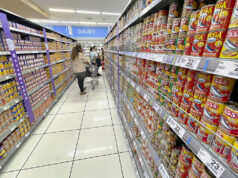DoTr planning more online registration, cashless fares
THE Department of Transportation (DoTr) said its post-pandemic transport modernization plan will seek to take greater advantage of automation, including online vehicle registration and digital fare collection systems.
“The road sector of the DoTr is preparing itself… to modernize the transportation systems as part of the new normal to ensure the survival of our people,” Transportation Assistant Secretary Goddes Hope O. Libiran said in an unpublished article shared with BusinessWorld last week.
She added: “These will involve technology-driven, integrated, and sustainable initiatives that will not only address disease transmission but will also revolutionize road transport to become efficient, reliable, environment-friendly and safe.”
The post-pandemic plans call for more online payments ad online renewals of driver’s licenses, to minimize human contact, Ms. Libiran said.
“Part of the process for motor vehicle registration will also be done online. OTC’s (Office of Transportation Cooperatives) required seminars for coops can also be done as teleconferences or webinars,” she added.
The department has also started using fleet monitoring systems in the free buses for medical frontliners, which are equipped with GPS devices to allow passengers to track them and monitor expected arrivals at their locations.
“This will make commute more hassle-free. To the operator and government regulator, it will enable us to track driver behavior and trips made and kilometer run of the buses, monitor how many are running, and minimize waste of resources such as engine idling,” Ms. Libiran said.
The department has been pushing for the use of automatic fare collection systems (AFCS) in public transport to limit the transmission of the coronavirus and speed up revenue accounting.
Ms. Libiran said data collected through the AFCS can also help operators and policy makers improve the efficiency of public transport services.
The department is also looking at online seat booking to reduce passenger congestion at terminals.
“This will not only cut down on exposure risk, but can also help trace possible contacts and quickly disseminate information if a passenger is diagnosed with any infectious disease,” the official said.
She noted that many motorists are now embracing the electronic toll collection system. “People have seen its vast benefits of faster queuing time at toll booths, rather than cash transactions.”
The department is likewise looking at the consolidation of operators and the rationalization of routes.
“Operators need to consolidate for economies of scale. Drivers need to be employed into the formal society so that employment benefits will be provided. Routes should be optimized for operators to gain more load factor per trip,” Ms. Libiran said.
Other measures are dedicated lanes for buses, shuttle services for employees, school buses for students, and greater use of non-motorized transport such as bicycles.
“Integration of the non-motorized transport to the road space and development of necessary infrastructures will be prioritized,” Ms. Libiran said. — Arjay L. Balinbin



